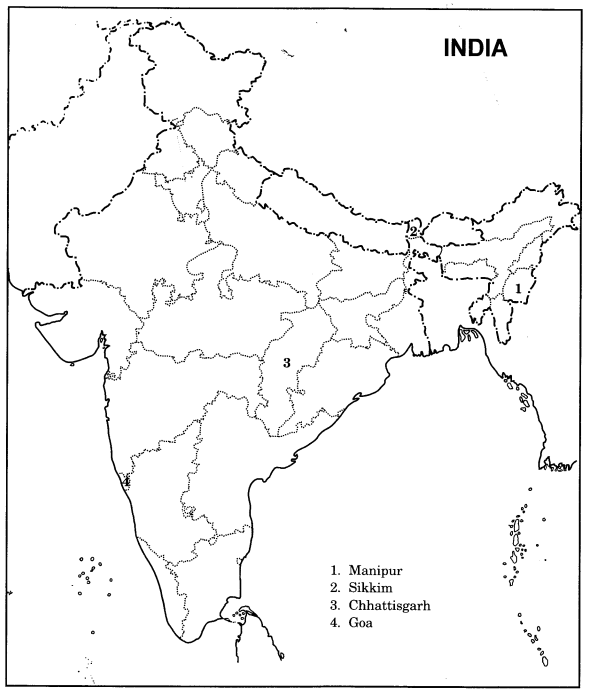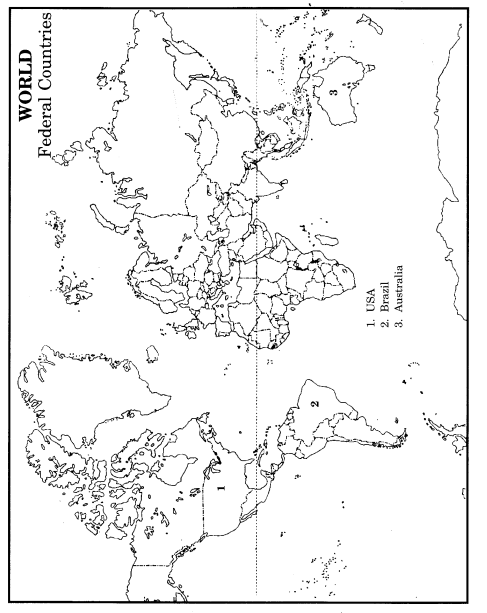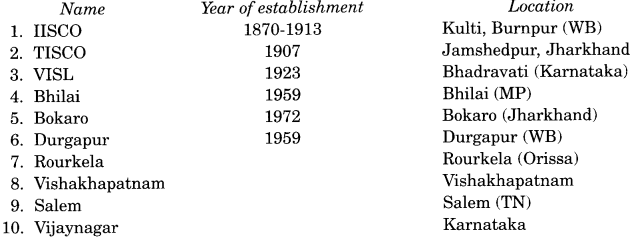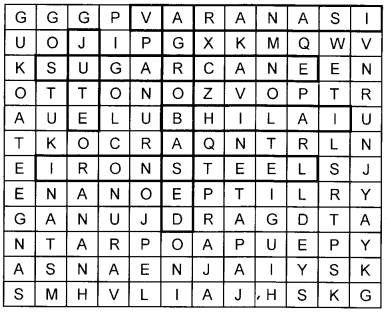NCERT Solutions for Class 10 Social Science Civics Chapter 3 Democracy and Diversity
These Solutions are part of NCERT Solutions for Class 10 Social Science. Here we have given NCERT Solutions for Class 10 Social Science Civics Chapter 3 Democracy and Diversity.
TEXTBOOK EXERCISES
Question 1.
Discuss three factors that determine the outcomes of politics of social divisions.
Answer:
Three factors are crucial in deciding the outcome of politics of social divisions. First of all the outcome depends on how people perceive their identities. If people see their identities in singular and exclusive terms, it becomes very difficult to accommodate. As long as people in Northern Ireland saw themselves as only Catholic or Protestant, their differences were difficult to reconcile. It is much easier if the people see that their identities are multiple and are complementary with the national identity.
A majority of Belgians now feel that they are as much Belgian as they are Dutch or German-speaking.
This helps them to stay together. This is how most people in our country see their identity: they think of themselves as Indian as well as belonging to a state or a language group or a social or religious community.
Second, it depends on how political leaders raise the demands of any community. It is easier to accommodate demands that are within the constitutional framework and are not at the cost of another community. The demand for ‘only Sinhala’ was at the cost of the interest and identity of the Tamil community in Sri Lanka. In Yugoslavia, the leaders of different ethnic communities presented their demands in such a way that these could not be accommodated within a single country.
Third, it depends on how the government reacts to the demands of different groups. As we saw in the examples of Belgium and Sri Lanka, if the rulers are willing to share power and accommodate the reasonable demands of minority community, social divisions become less threatening for the country. But if they try to suppress such a demand in the name of national unity, the end result is often quite the opposite. Such attempts at forced integration often sow the seeds of disintegration.
Question 2.
When does a social difference become a social division?
Answer:
People who feel marginalized, deprived, and discriminated against have to fight against the injustices. Such a fight often takes the democratic path, voicing their demands in a peaceful and constitutional manner, and seeking a fair position through elections.
Sometimes social differences can take the form of an unacceptable level of social inequality and injustice. The struggle against such inequalities sometimes takes the path of violence and defiance of state power. However, history shows that democracy is the best way to fight for recognition and also to accommodate diversity.
Question 3.
How do social divisions affect politics? Give two examples.
Answer:
Expression of various kinds of social divisions in politics often results in their cancelling one another out and thus reducing their intensity. This leads to the strengthening of democracy. But a positive attitude towards diversity and a willingness to accommodate it does not come about easily. People who feel marginalized, deprived, and discriminated against have to fight against the injustices.
Such a fight often takes the democratic path, voicing their demands in a peaceful and constitutional manner, and seeking a fair position through elections. Sometimes social differences can take the form of an unacceptable level of social inequality and injustice. The struggle against such inequalities sometimes takes the path of violence and defiance of state power. However, history shows that democracy is the best way to fight for recognition and also to accommodate diversity.
Question 4.
Fill in the blanks:
___________ social differences create possibilities of deep social divisions and tensions. ____________ social differences do not usually lead to conflicts.
Answer:
Overlapping social differences create possibilities of deep social divisions and tensions Cross-cutting social differences do not usually lead to conflicts.
Question 5.
In dealing with social divisions which one of the following statements is NOT correct about democracy?
(a) Due to political competition in a democracy, social divisions get reflected in politics.
(b) In a democracy it is possible for communities to voice their grievances in a peaceful manner.
(c) Democracy is the best way to accommodate social diversity.
(d) Democracy always leads to the disintegration of society on the basis of social divisions.
Answer:
(d) Democracy always leads to the disintegration of society on the basis of social divisions.
Question 6.
Consider the following three statements :
A. Social divisions take place when social differences overlap.
B. It is possible that a person can have multiple identities.
C. Social divisions exist in only big countries like India. Which of the statements is/are correct?
(a) A, B, and C
(b) A and B
(c) B and C
(d) Only C
Answer:
(b) A and B
Question 7.
Arrange the following statements in a logical sequence and select the right answers by using the code given
below :
A. But all political expressions of social divisions need not be always dangerous.
B. Social divisions of one kind or the other exist in most countries.
C. Parties try to win political support by appealing to social divisions.
D. Some social differences may result in social divisions.
(a) D, B, C, A
(b) D, B, A, C
(c) D, A, C, B
(d) A, B, C, D
Answer:
(a) D, B, C, A
Question 8.
Among the following, which country suffered disintegration due to political fights on the basis of religious and ethnic identities?
(a) Belgium
(b) India
(c) Yugoslavia
(d) the Netherlands
Answer:
(c) Yugoslavia
Question 9.
Read the following passage from a famous speech of Martin Luther King Jr. in 1963. Which social division is he talking about? What are his aspirations and anxieties? Do you see a relationship between this speech and the incident in Mexico Olympics mentioned in this chapter?
‘I have a dream that my four little children will one day live in a nation where they will not be judged by the colour of their skin but by the content of their character. Let freedom ring. And when this happens, and when we allow freedom ring – when we let it ring from every village and every hamlet, from every state and every city, we will be able to speed up that day when all of God’s children – black men and white men, Jews and Gentiles, Protestants and Catholics – will be able to join hands and sing in the words of the old Negro spiritual: ‘Free at last! Free at last Thank God Almighty, we are free at last!’ I have a dream that one day this nation will rise up and live out the true meaning of its creed,: “We hold these truths to be self- evident: that all men are created equal.”
Answer:
Social division: He is talking about social divisions in the USA between the Blacks and Whites, Jews and Gentiles, Protestants, and Catholics.
His aspirations and anxieties: He aspires that all human beings must be free and there should be no discrimination on the basis of color and creed. He dreams that his four children would one day live in a nation where they would not be judged by the colour of their skin but by the content of their character. He dreamt that there would be freedom for all in every village, hamlet, city, state. He hoped that the time would come when all people – Black, White, Jews and Gentiles, Protestants and Catholics – without any discrimination, would join and ring the words of the old Negro spiritual: Free at last! Free at last! Thank God Almighty, we are free at last!” In short, he dreamt that one day all men would be treated as equal.
Relationship between the speech and the incident in Mexico Olympics: There is a relationship between the two because at the medal ceremony of the 200 meters race in the 1968 Olympics held in Mexico City, two African-Americans – Tommie Smith and John Carlos, who had won gold and bronze medals, had protested against Black poverty wearing black socks and no shoes.
We hope the NCERT Solutions for Class 10 Social Science Civics Chapter 3 Democracy and Diversity help you. If you have any query regarding NCERT Solutions for Class 10 Social Science Civics Chapter 3 Democracy and Diversity, drop a comment below and we will get back to you at the earliest.




